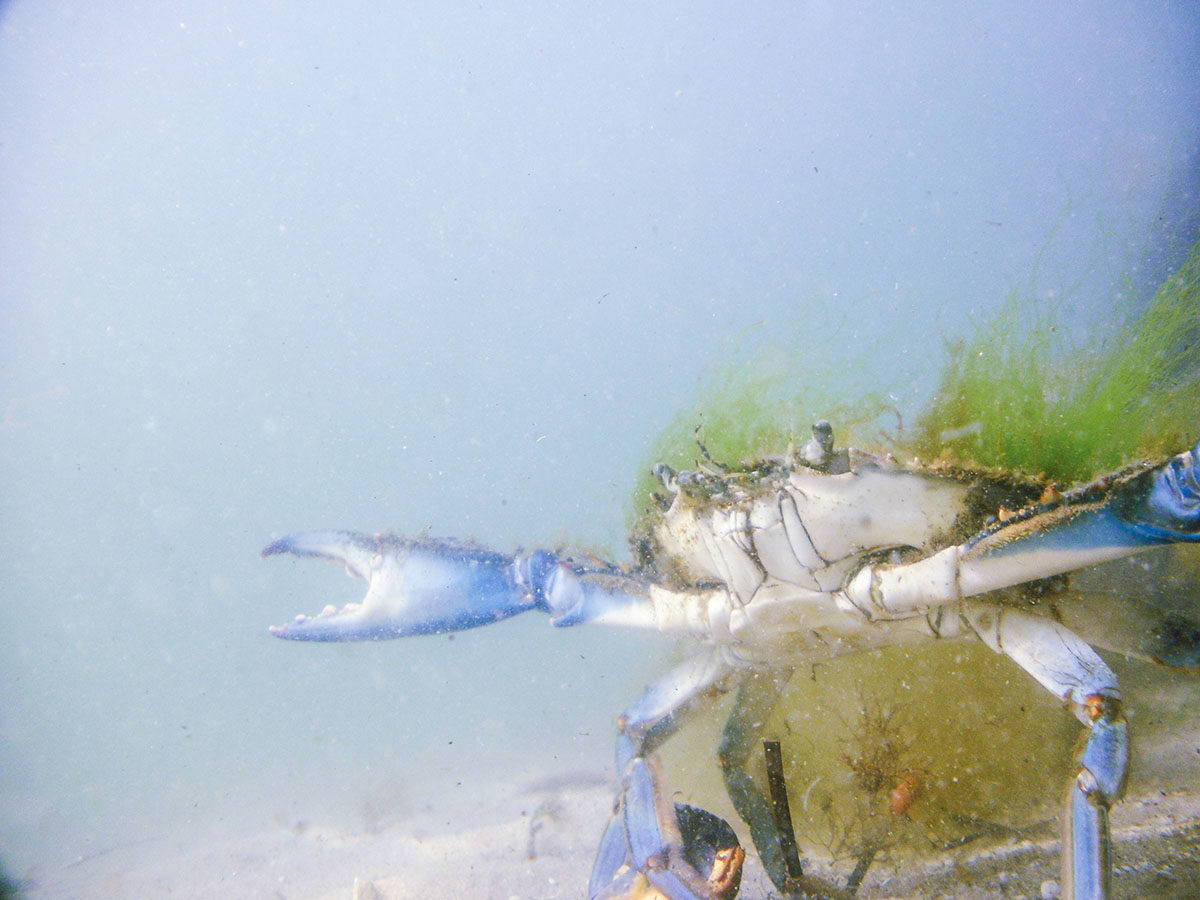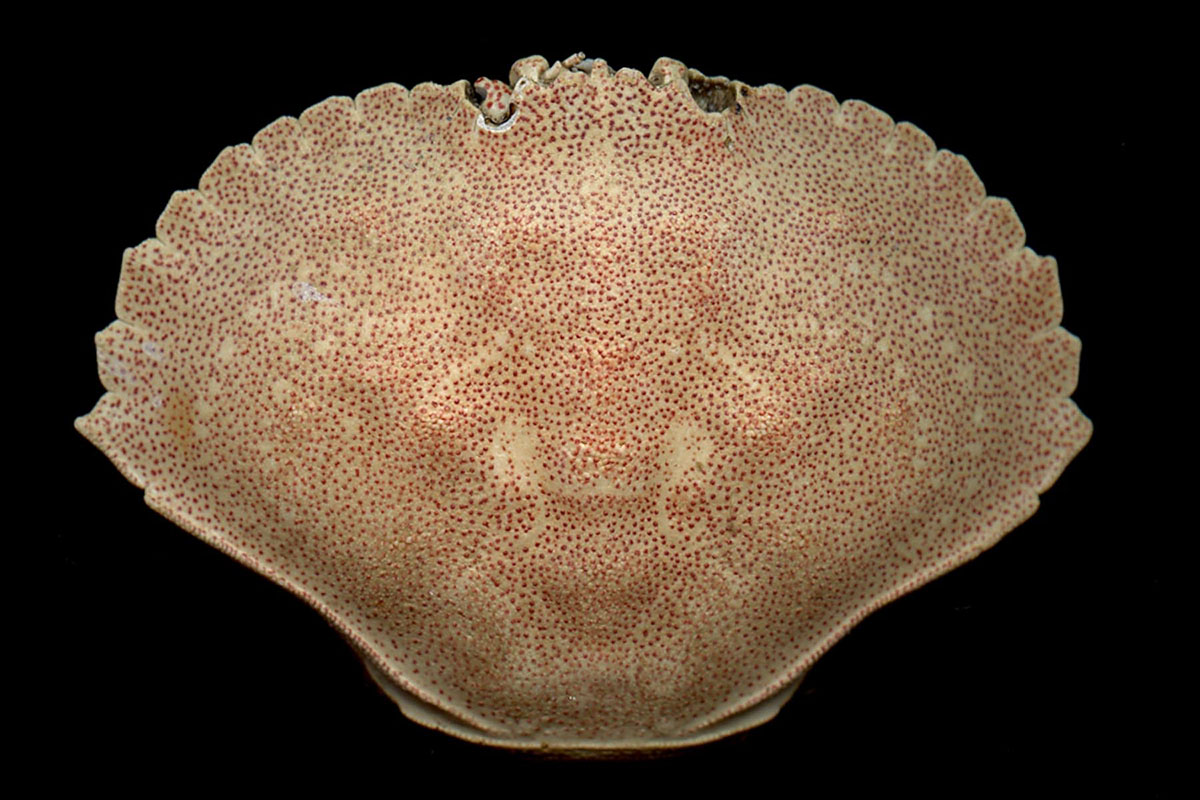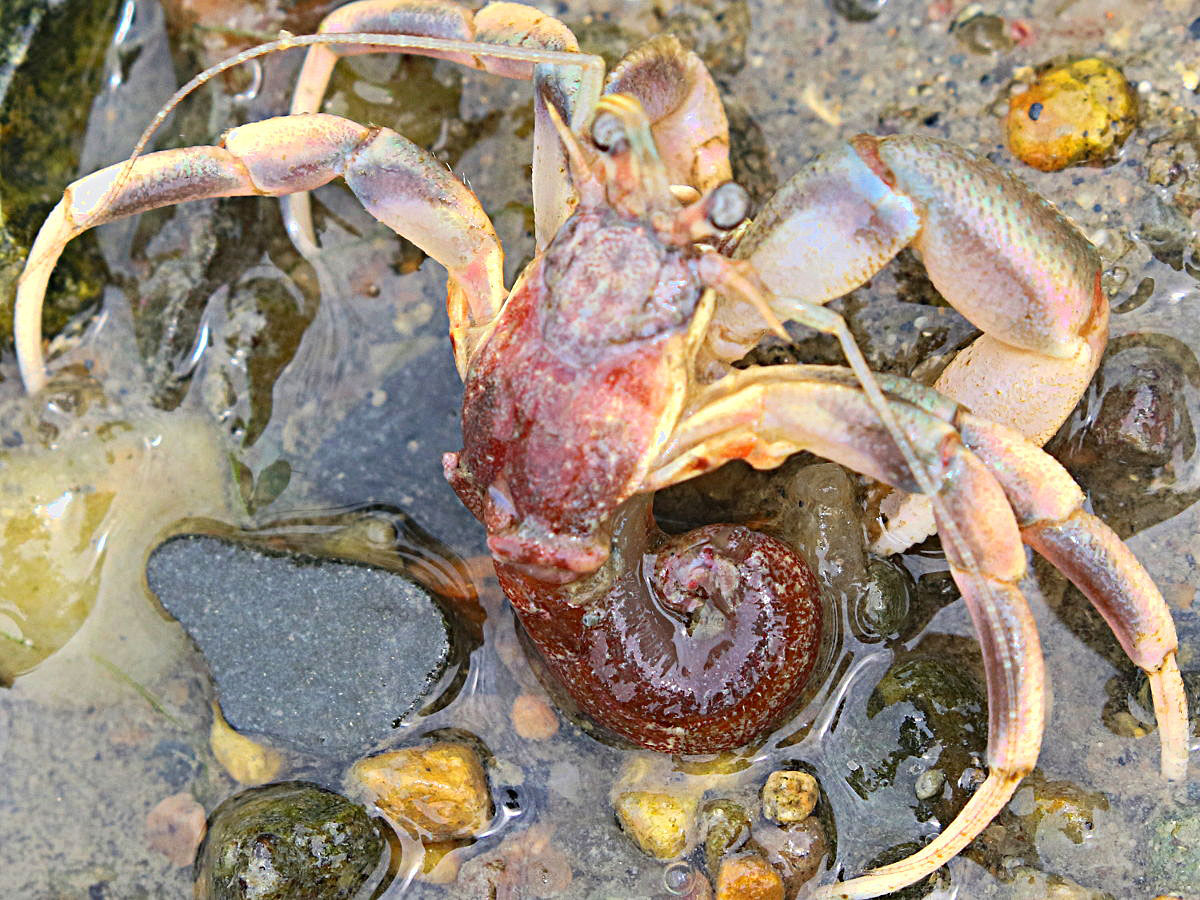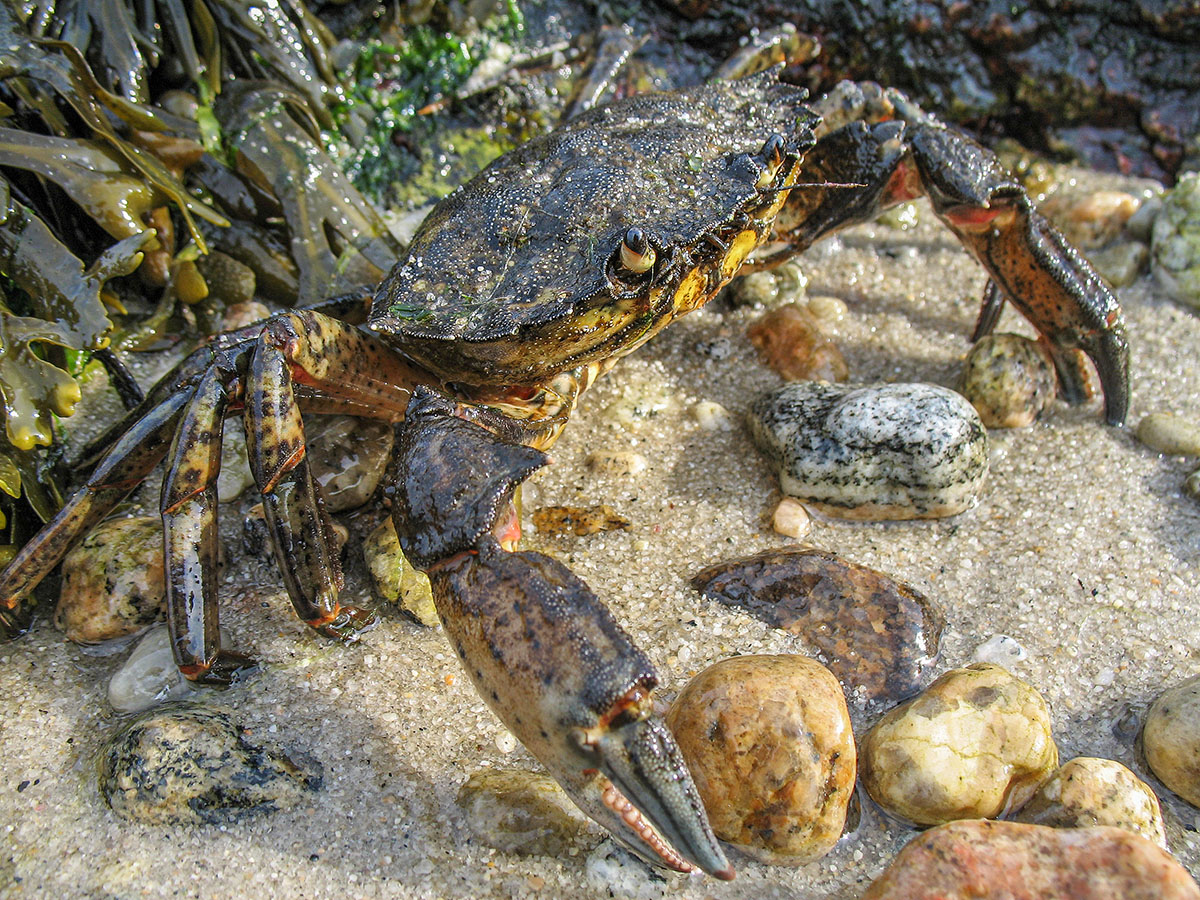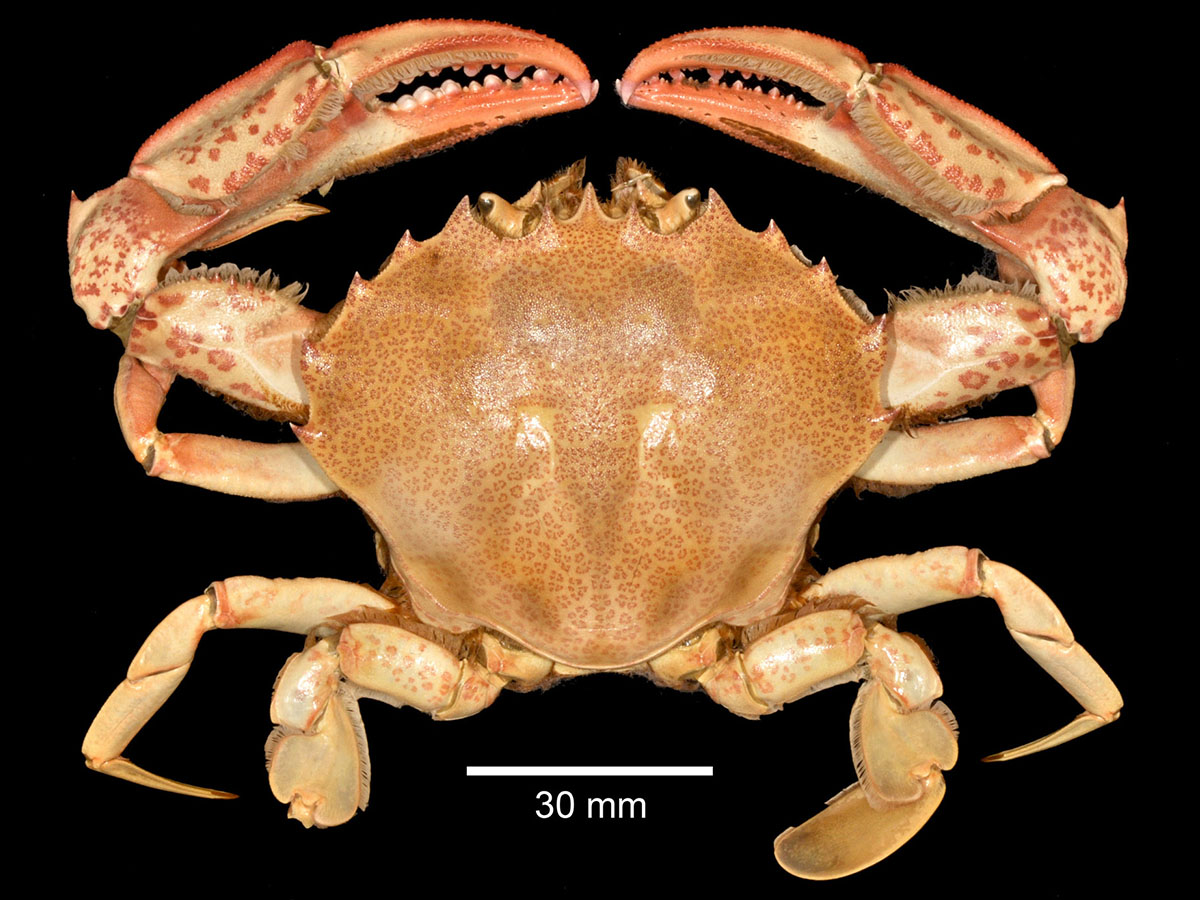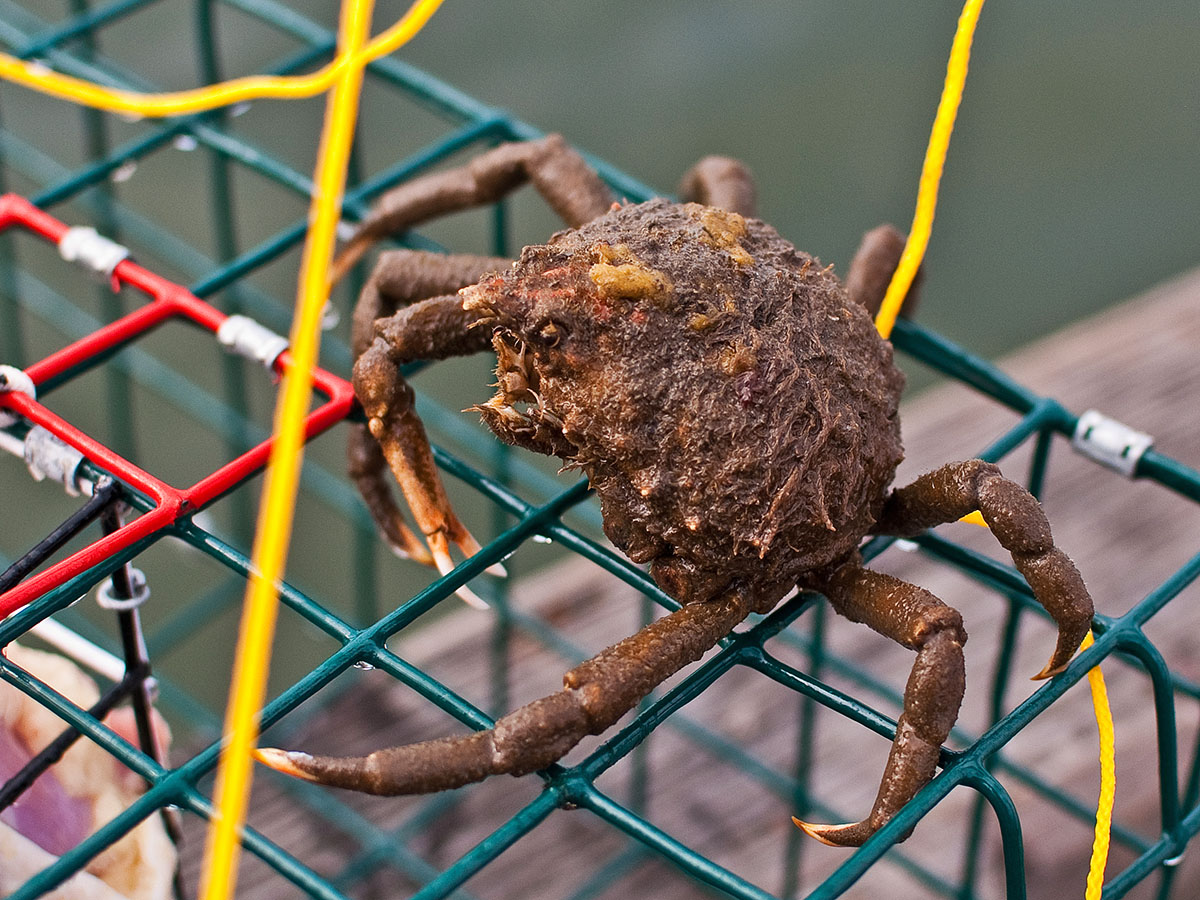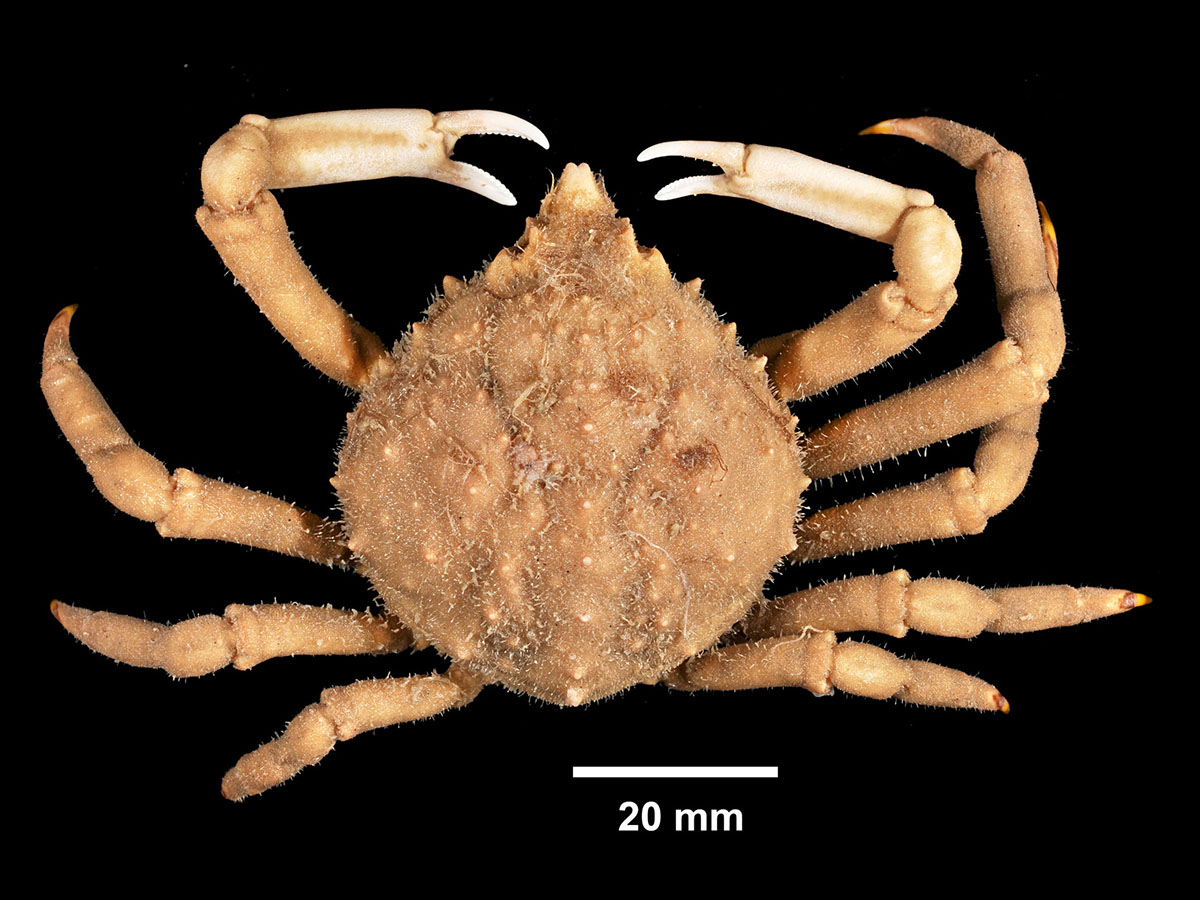by Terry McNamara
Dock Beach. It is July and the sky is a bright baby blue. You are wading out toward the swimming rafts, chatting with a friend. Suddenly, you feel the touch of something on the topside of your foot, breaking your idyll. Some underwater menace with several pointy legs scurries across your foot. After a good shriek, panic turns to curiosity. You and your friend stalk the shallows like predatory marsh birds. What kind of crab is it?
There is no shortage of suspects. In fact, we have quite a diverse group of decapods (meaning “ten legs”) living beneath the surface of the waters surrounding Fishers Island.
Hermit crabs, European green grabs, Atlantic blue crabs, lady crabs, spider crabs, fiddler crabs, Atlantic rock crabs, Jonah crabs, black-fingered and white-fingered mud crabs are among the common crabs found beneath the clear waters of Dock Beach, hunting in the eel grass fields, or hiding under rocks at low tide.
Most of these crabs are predacious omnivores and scour the sea floor for fish, squid, clams, snails, old hot dogs, algae, seaweed, plankton – even other crabs of the same species. They are adept detritovores, scavenging dead plant and animal material, and as such play a key role in the ecology of the waters and marshes of our island.
Exoskeletons, Sex, and Seasonality
These animals are striking in that they possess highly developed exoskeletons that protect their bodies. However, as you might imagine, this exoskeleton also presents challenges for growth and mating. For the crab to grow, the old shell must be discarded and another formed. This process is called molting. This is also the time when the female can be fertilized internally by the male.
Some species, such as the Atlantic blue crab (Callinectes sapidus), use pheromones to attract a partner during molting. After the chemical connection is made the two will clasp each other in a missionary position. The male will hold the female in this position and insert the sperm inside her where it is stored until used later to fertilize her eggs. The crabs will stay in this configuration (called a “doubler”) until the female’s shell has safely hardened and ensuring that no other male will mate with her.
The mating, molting, and egg laying cycles are times when crabs are more vulnerable than usual. These activities are uniquely seasonal for each of the crab species and so lead to an abundance of observations of different crabs (or their remains) at different times of year. For example, fiddler crabs (Uca sp.) spend the winter hibernating in the three-foot-deep burrows they maintain in the intertidal zone of the marsh.
Other crabs move to deeper water in cold weather and return to the shallows to mate and release their eggs in the spring or late summer.
Have Shell, Will Travel
Hermit crabs are distinguished by the borrowed mollusk shells they carry about with them. The smaller ones inhabit discarded common periwinkle and oyster drill shells that are used for protection for their soft abdomens. As they grow larger, they require larger shells like whelk or moonsnail. The broad- or flat-clawed hermit crabs (P. pollicaris) grow to five inches. The larger individuals tend to favor deeper water and hence are rarely observed near the beach. The most ubiquitous species is the long-clawed hermit crab (P. longicarpus) that grows to 1ó inches long. Acadian hermit crabs (P. acadianus) are sometimes present as well. Generally, the various species are distinguished from each other by the shapes and colors of their claws.
Worst Invasive Marine Species
In West Harbor, the European green crab (Carcinus maenas) grows to almost 5 inches across the carapace and inhabits protected marine areas around rocks and other underwater structures. Their most distinctive feature is not shell color – which can vary from reddish to gray to a dark mottled green – but the five spines or teeth on each side of the shell. Additionally, there are three rounded lobes between the eyes. Like hermit crabs, they are active at all times of day. Unlike hermit crabs that feed principally on debris, green crabs are active predators. They feed on soft-shelled clams, young hard-shelled clams, and scallops, as well as worms and other small crustaceans. Their digging activity adversely affects eelgrass beds. These characteristics have earned them a place on many state’s “Worst Invasive Marine Species” list. However, there are other crabs whose increasing populations are welcomed.
“Beautiful Swimmer”
The Atlantic blue crab (Callinectes sapidus) is appearing in greater numbers on both sides of the island. Their genus name, Callinectes, translates from the ancient Greek as “beautiful swimmer” while the Latin species name, sapidus, means “savory.” The attractive green shell has a distinctive shape and can measure over 11 inches across the carapace, point to point. The rear legs are flattened making them excellent swimmers. The claws are blue giving them their common name with the mature females having red tips. They are aggressive predators preying on clams, mussels, oysters and any animal or vegetative matter available. Great care should be exercised when attempting to capture or handle them.
Lady Bellum
The same can be said of the lady crab (Ovalipes ocellatus). Though it only grows to about 4 inches, its aggressive nature and hunting behavior sometimes cause painful crab-human interactions. If you’ve ever been pinched on the toe while walking in the shallow water of Dock Beach, the likely culprit was a lady crab. It often lies partially buried in the sand with only its eyes showing, waiting for its prey to swim by. It is easily recognized by its light-colored carapace, which is covered in reddish polka dots as are its powerful claws. Like the blue crab, it has distinctive flattened rear legs that make it an excellent swimmer enabling it to dart out and seize its prey. Should a foot disturb it while buried, this aggressive little crab uses its sharp claws to ward off the “attack.” Happily, the remainder of our Dock Beach crab population is not particularly bellicose or fast moving.
Ugly by Design
The slowest member of our crab population is the common spider crab (Libinia emarginata) that has a carapace up to 4 inches and long slender legs. Due to its body and leg design, it can walk in a forward direction which is quite rare in crabs, where scuttling sideways is the norm. In addition, spider crabs have sensory organs on the ends of their legs that enable them to locate food items, including starfish, as it plods along the ocean bottom. This crab decorates its shell with various spines and tubercles, algae, debris, and small invertebrates to avoid predation. The downside of this scavenger’s vegetative camouflage is that it renders this crab very unattractive. It is common in every marine environment in the harbor, particularly the interiors of the few remaining lobster traps.
Fiddlers on the Marsh
The intertidal marsh areas surrounding the harbor are home to colonies of interesting small crabs living in burrows. These are mostly marsh fiddler crabs (Uca pugilator). They have a smooth, square-shaped body up to 1 inch long that is generally blue or purplish with dark markings. The males possess a brightly colored 2 inch claw that is used to court females and a small feeding claw. The female has two of the small claws. The small claws are used to gather clumps of sediment from which the vegetative matter is then painstakingly scraped into their mouths. As a result, it takes a male twice as long to feed. The crabs remain in their long slanting burrows during high tide and block the entrance to be safe from predation. They emerge to feed on decaying vegetation as it recedes, performing a vital role in the health and maintenance of the marsh ecosystem.
Jonah and the Rock
While these are the most common crabs that you will encounter – there are many more, such as black-fingered mud crabs (Panopeus herbstii) and invasive white-fingered mud crabs (Rhithopanopeus harrisii) that are attracted by bait on crab lines hung off a dock or caught in minnow traps.
The many crabs present in our waters are essential elements in the ecosystem that constitutes the Fishers Island marine environment. It is constantly changing as the waters warm and more invasive organisms appear because of our global economy. All members of our community can contribute to our understanding and recording of the changes that are occurring. Additionally, the observation of the crabs and collection of their shells and claws provides an excellent opportunity to use intellect and logic to identify different species for citizen scientists of all ages. Please share any of your noteworthy discoveries or additional species observed with the Museum or with the Fishers Island Biodiversity Project on iNaturalist.

